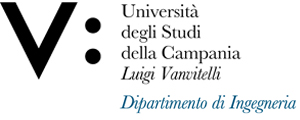Aniello RICCIO
Insegnamento di SPERIMENTAZIONE DI STRUTTURE AEROSPAZIALI
Corso di laurea magistrale in INGEGNERIA AEROSPAZIALE
SSD: ING-IND/04
CFU: 6,00
ORE PER UNITÀ DIDATTICA: 48,00
Periodo di Erogazione: Secondo Semestre
Italiano
| Lingua di insegnamento | Italiano |
| Contenuti | Il corso ha come obiettivo di fornire agli allievi una descrizione dettagliata dei concetti base della sperimentazione di strutture ed elementi descrivendo le tecniche e le principali strumentazioni necessarie alla progettazione ed esecuzione di prove sperimentali. Fondamenti di analisi dei dati mediante Design of Experiments (DeO). Aspetti pratici delle principali strumentazioni e sistemi sensoristici (strain gauges) per la sperimentazione di strutture, elementi e coupon anche mediante sessioni in laboratorio presso il CNR Sede di Portici. |
| Testi di riferimento | 1) J. M. Hodgkinson CrC Publication Woodhead Publishing Limited 2000 |
| Obiettivi formativi | Il corso ha come obiettivo di fornire agli allievi: |
| Prerequisiti | Le competenze degli allievi attesa in ingresso del corso sono relative: |
| Metodologie didattiche | Le lezioni sono frontali per un totale di 48 ore tenute dal docente del corso, con una durata di 120 minuti. Sono previste alcune esercitazioni in laboratorio organizzate dal docente presso il Laboratorio di Sperimentazione Strutturale del CNR locazione di Portici concordandone con gli allievi frequenza e durata in base alle loro necessità. |
| Metodi di valutazione | La modalità di verifico consiste in una prova orale con l’obiettivo di accertare le capacità acquisite dallo studente A. di descrivere e gestire sistemi per l’analisi, il design e l’esecuzione di prove strutturali per elementi e strutture; B. saper descrivere le tecniche di monitoraggio di parametri sperimentali; C. analisi dei dati sperimentali. |
| Altre informazioni | Le prove di esame sono fissate con cadenza almeno mensile (ad esclusione della pausa estiva) and secondo la disponibilità e le esigenze degli studenti se possibile. |
| Programma del corso | Il programma del corso è il seguente: |
English
| Teaching language | Italian |
| Contents | The course content is mainly focused on: detailed description of the basic features of experimental strategy and approach for elements and structures. The lessons will cover the most used and employed sensors, transducers and devices for the design and the execution of experimental tests on coupon, element and structures. Basics of Test Design, data analysis by means of DeO technique is provided with hand on example. The practical feature of sensor such as strain gauges are illustrated and students will approach the practical installation by lab hand-on work at CNr location in Portici. |
| Textbook and course materials | 1) J. M. Hodgkinson CrC Publication Woodhead Publishing Limited 2000 |
| Course objectives | Course objectives are the following: |
| Prerequisites | Students are requested the following knowledge as prerequisite for this course: |
| Teaching methods | Lessons are frontal and in total are 48 h with an average of 120 minutes. Hand-on lesson will be organized along with instruction visit at CNR Structural Lab. At Portici Location according to the students’ availability and requirements. |
| Evaluation methods | An oral interview will provide necessary indication of the student achievements in terms of engineering content and capacity of correctly design a test or specific experimental observation for aerospace element or structure. The final interview will focus on specific arguments of the course and a practical assessment to verify the level of student's knowledge on design and execution of the structural experiments. |
| Other information | Monthly oral examinations are programmed (excluding summer holydays) according to the students availability and needs if possible. |
| Course Syllabus | Course programme is focusing on the following topics: |








